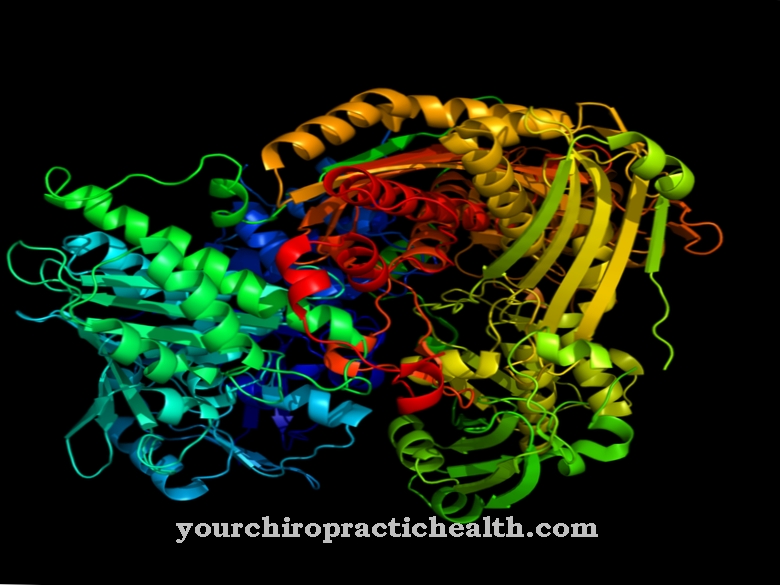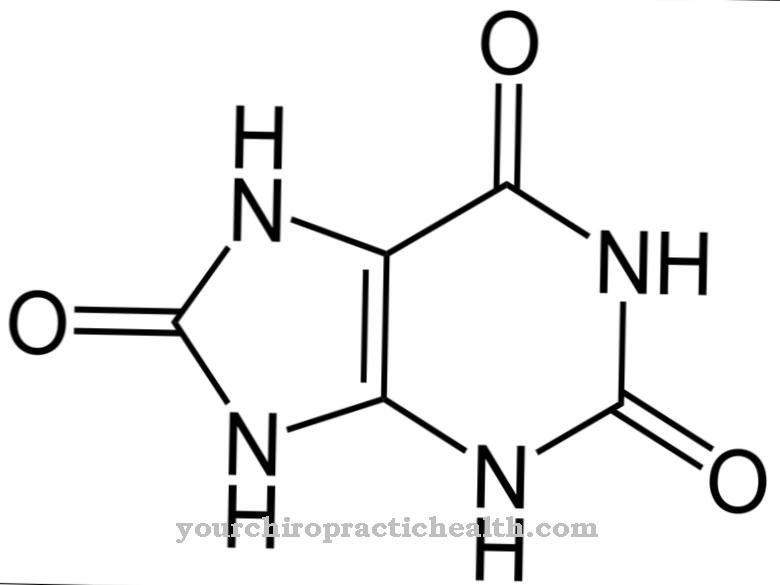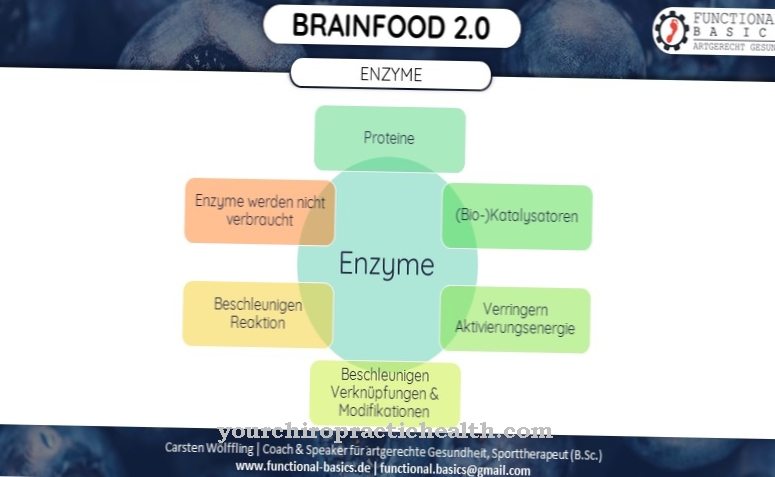Leukocytes are, along with erythrocytes and thrombocytes, one of the three important cell lines in human blood. As part of our immune system, they are responsible for the defense against pathogens and carry out this activity far beyond the limits of the blood vessels. A leukocyte is therefore not a leukocyte - there are a number of colorful subspecies.
What are leukocytes

Leukocytes are also known as "white blood cells". They make up the majority of the immune cells in the human body and, measured as blood values, are an important benchmark in medical diagnostics and therapy.
According to their place of formation and their function, a distinction is made between different subclasses of leukocytes, which can also be measured individually as a so-called "differential blood count" in the laboratory. A large part are made up of granulocytes, which in turn are subdivided into neutrophils, eosinophils and basophils according to their staining behavior and are especially important for the defense against bacteria and parasites, but also play a role in the development of allergies and autoimmune diseases. They can also be counted as part of the unspecific innate immune system and are formed in the bone marrow.
Another important group are the lymphocytes, which are part of the specific immune system. Here, in turn, a distinction is made between B lymphocytes, which also come from the bone marrow ("B" for "bone mark"), and T lymphocytes, which are produced in the thymus (hence "T"). The thymus is an important human organ with a bad lobby - hardly anyone outside the medical profession knows it - which is located in the upper rib cage behind the sternum.
In childhood, the thymus is the site of the formation of those T cells, which in turn are specialized as T killer cells or T helper cells and play an important role in virus defense and the formation of immunological memory (childhood diseases, vaccinations, etc.). In adulthood, the thymus deteriorates more and more and turns into a functionless fat body - perhaps that is why it is so little known. The B-lymphocytes from the bone marrow are the cells that produce the antibodies and thus carry the specific immune defense of the human organism.
Another crucial group of leukocytes: the macrophages. In the blood they are initially still called monocytes, when they then escape into the tissue, they do their main work as macrophages or giant phagocytes and lie in wait for pathogens and foreign material everywhere in the tissue of the skin, intestines, lungs and the rest of the body.
Meanwhile, the natural killer cells (NK cells), which play a role in the defense against viruses and tumor cells, have a nice name. Dendritic cells and mast cells also count among the leukocytes, but strictly speaking do not occur in the blood but in surface tissues such as skin and intestines and are therefore part of the innate immune system's outermost line of defense.
Measure blood values, blood tests & leukocytes
The blood count was originally performed under a microscope and initially separates red blood cells (erythrocytes) from leukocytes and blood platelets (thrombocytes).
This is quite simple, because due to their hemoglobin content, erythrocytes are actually red and leukocytes are not, while the platelets are much smaller and have a characteristic shape. Furthermore, this "complete blood count" can be further subdivided by creating a "differential blood count" in which the individual leukocyte subclasses are then broken down individually. To do this, different stains can be carried out, which the leukocytes then show in different red-blue-violet tones.
Nowadays, at least the "complete blood count" is done by machine. There are also automated processes for the "Diff-BB", but because of the greater susceptibility to errors and measurement inaccuracies, the laboratory doctor often looks through the microscope himself.
The normal values for leukocytes in general are 4000-10000 / microliter, of which 50-75 percent neutrophils, 20-45 percent lymphocytes, 2-8 percent monocytes, 2-5 percent eosinophils and 0-1 percent basophils (memorandum: "Never let monkeys eat bpineapple").
Function, effect & tasks
The function of the Leukocytes can basically be summarized as "the body's defense system". The cells patrol the blood and migrate into the tissue when necessary, either to replace outdated "guardian cells" (e.g. the dendritic cells) or, in acute need, attracted by messenger substances.
Specifically, a defense reaction could look like this: a pathogen penetrates through a wound in the skin and is eaten by macrophages that are constantly residing there. The scavenger cell releases messenger substances and with these ensures that further immune cells are attracted to the scene - there could be other pathogens there. If the pathogen is a bacterium, it is primarily neutrophils that then immigrate and eat anything foreign that comes in their way.
If it is a virus, T lymphocytes are attracted. Some of these can become active themselves as phagocytes or help (as "T helper cells") the B cells to produce antibodies, which are then spread in the blood and on the mucous membranes and mark every foreign particle resembling the original pathogen and thus inactivate the Prepare phagocytes for feeding.
Diseases
A measurement of the White blood cell count belongs to every decent basic diagnosis at the hospital admission or in the outpatient medical field. An increase in the white blood cell count can be an indication of an infection with which the body is currently dealing.
If you then add a differential blood count, you can possibly use the increase in neutrophils or lymphocytes to make a rough assessment of whether the infection is more likely to be bacterial or viral.
However, this is very imprecise and only the starting point or the occasion for further diagnostics. In the case of severe blood poisoning or special individual infections, the leukocyte count can sometimes be low.
If the white blood cell count is increased in an obstrus way, this can be an expression of leukemia. This, as a coincidental finding when a blood sample is taken for a completely different cause, is in many cases the first indication of blood cancer if the person concerned still feels relatively healthy. Here, too, the Diff-BB provides information on the origin and type of leukemia. And here, too, the whole thing is often ambiguous and there are many leukemias in which the leukocyte count is normal or slightly reduced.
The scene of another disease are the leukocytes when infected with the human immunodeficiency virus (HIV): Here, the T-helper cells in particular are infected by the virus and thus become inoperable. Since the disease slumbers for years without any external signs in the body before the full picture of AIDS breaks out, the measurement of the T cells plays an important role here in order to be able to estimate the progress of the disease and the success of the therapy.












.jpg)



.jpg)










.jpg)
